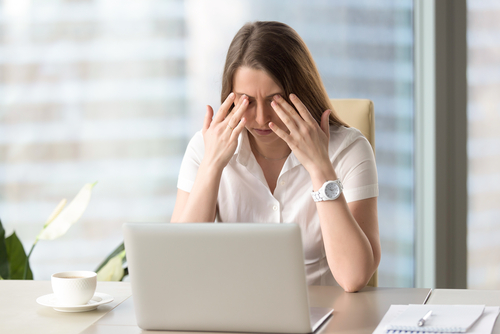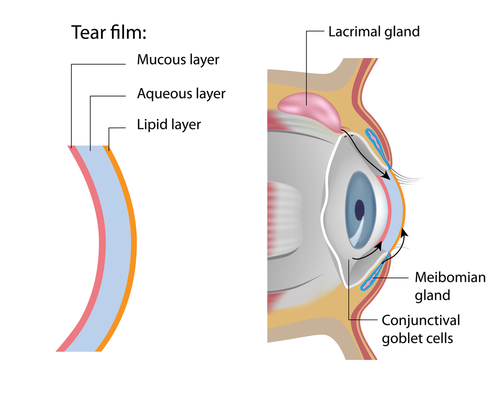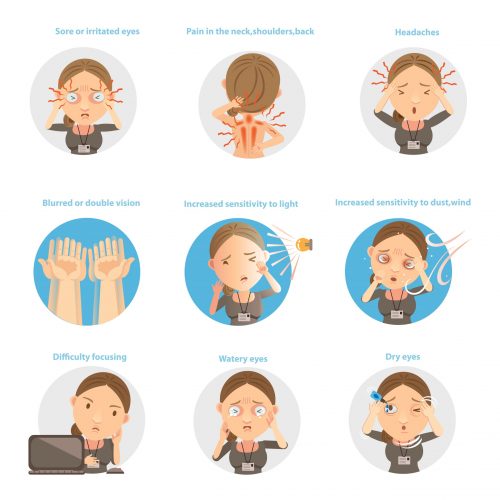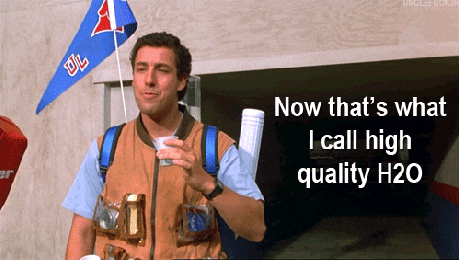Blog post by: Eye Physicians of Long Beach

Do you ever feel like your eyes are too dry? Does it ever hurt when you blink? Maybe you wake up and your eyes are red, bloodshot, and irritated.
These are all classic signs of dry eye syndrome. But what’s the big deal? So your eyes are dry and a little scratchy.
It’s not going to hurt you, right? Not exactly. Keep reading to learn why you should keep your dry eye in check!
What Is Dry Eye Syndrome?
In the simplest of terms, dry eye syndrome is a common eye condition that affects the tear system of the surface of the eye. In most cases, dry eye occurs because:
- The eyes are not producing enough tears
- The tears that the eyes produce are low-quality
- The tears produced evaporate from the eyes too quickly
Tears are made up of tear film, which has three layers. These three layers are crucial and make sure the eye is covered, protected, and moisturized. If you have a tear film that is missing any of the three layers, you have tears that are lacking the proper components.
The tear film should have the following components. The outer layer is an oily layer produced by the Meibomian glands. This layer is what prevents the watery layer of the tear film from evaporating too quickly.

The middle layer is an aqueous, or water layer, produced by the lacrimal glands. It nourishes and protects the eye with water-soluble proteins.
The inner layer is a mucin layer that spreads the watery middle layer over the entire eye. This is what allows the tears to stick to the surface of the eye.
What Are The Symptoms Of Dry Eye?
With a name like “dry eye” many people assume that having dry eye syndrome means you have dry eyes. Although it is part of it, there are other symptoms you should watch out for.
Common symptoms of dry eye include:
- Red, irritated eyes
- Dry eyes
- Foreign body sensation like something is in your eye
- Eye fatigue
- Eye discomfort or pain
- Excessive tearing or watering
- Mucous buildup around the eyes
- Stinging or burning sensation
- Blurry vision
- Experiencing discomfort when wearing contact lenses
- Scratchy or gritty feeling in your eyes

If you notice these symptoms, let your eye doctor know. With any eye condition, dry eye included, it’s always better to diagnose and treat it early on.
How Can You Treat Dry Eye Naturally?
For mild cases of dry eye, treating it using natural approaches can help. In some cases, it can be as simple as making small lifestyle changes. You may want to try the following:
Drink More Water
If your eyes feel too dry, it could be a sign that your body is dehydrated and you need to drink more water. It really is true that you should be drinking at least eight, 8-ounce glasses of water every single day.

It sounds like a lot, but your skin, eyes, and general health will thank you if you drink up!
Invest In Humidifiers Around Your Home
Especially in the colder winter months, Long Beach can get a little dry. Combat this by putting a few humidifiers around your home.

Humidifiers are great at bringing moisture back into the air. Consider putting them in the rooms that you spend the most time in.
For most people, this includes their bedroom and the living room. In the winter, no matter where you live, the air will get drier, so humidifiers are the perfect solution.
Blink More
You already know we live in a digital world and that digital devices aren’t exactly helping your eyes. Blinking is something that we need to do.
You don’t think about it when you blink, but you need to do it. When you look at any kind of screen, like on your phone or computer monitor, you’re less likely to blink.

By blinking less, you’re spreading fewer tears across the surface of your eye. This can eventually lead to symptoms of dry eye. So what can you do?
Blink more! If you know you’ll be on the computer for a while, take frequent breaks away from your screen. Keep artificial tears near your desk to keep your eyes lubricated and moisturized.
What To Do If Natural Dry Eye Treatments Aren’t Working
Tried the above suggestions and you’re not finding the relief you’re looking for? You’re not alone!
Many patients with dry eye syndrome find that it takes several kinds of treatment before they find relief. It may take a combination of treatments before the root cause of your dry eye symptoms is treated.
At Eye Physicians of Long Beach, we offer a Dry Eye Center of Excellence for patients. To start, we’ll begin by performing tests that determine if you have dry eye.
This involves measuring the volume and quality of your tears. We may also take scans that determine how healthy your meibomian glands in the tear film are.
After testing, we’ll come up with a treatment plan that we feel is best for treating your dry eye. Some common treatment options for dry eye include:
Prescription Eye Drops
Two of the more popular prescription eye drops are Restasis and Xiidra. They can help reduce inflammation and help the eyes produce more of their own natural tears.
Steroid Eye Drops
These drops are good at reducing inflammation, though they can do it faster than prescription eye drops. They are a good short term option, but shouldn’t be used long term, as they may lead to complications like cataracts or increased eye pressure.
Punctal Plugs
Punctal plugs come in both temporary and permanent forms. They are small plugs used to plug the tear drain and help keep tears in the eye longer.
These can be good for patients whose tears evaporate out of their eyes too quickly.
LipiFlow
For patients with meibomian blockages, LipiFlow is an FDA-approved medical device. It combines the use of heat and gentle pressure while stimulating the release of the oily layer of the tear film.
Tired of dealing with the often frustrating symptoms of dry eye symptoms on your own? There’s a better way!
Request an appointment at Eye Physicians of Long Beach in Long Beach, CA to get on the road to relief from dry eye, once and for all!
